site search
online catalog
US ISSUE MODEL 1872 SHOE, MAKER MARKED, POSSIBLY BY JOHN MUNDELL OF PHILADELPHIA
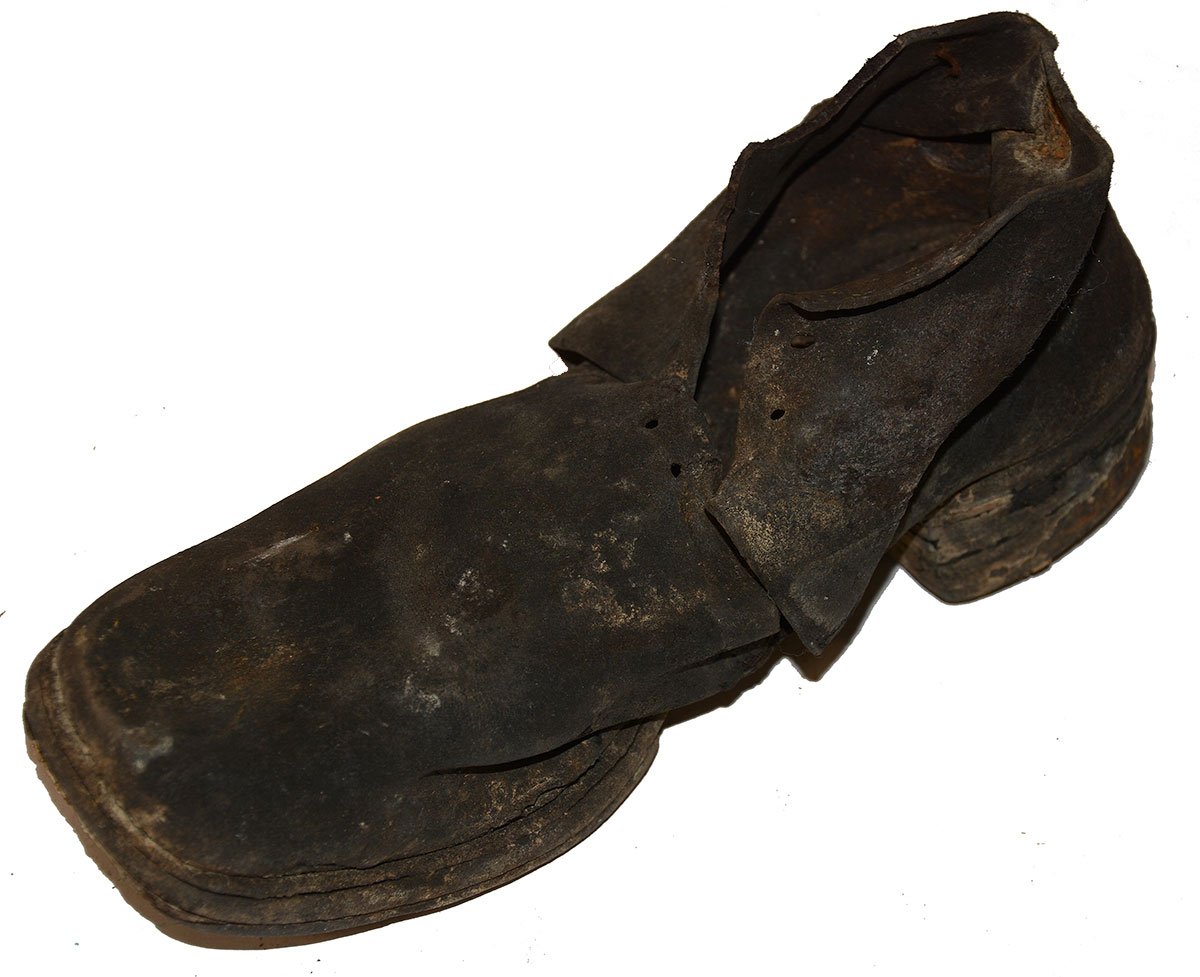
Hover to zoom

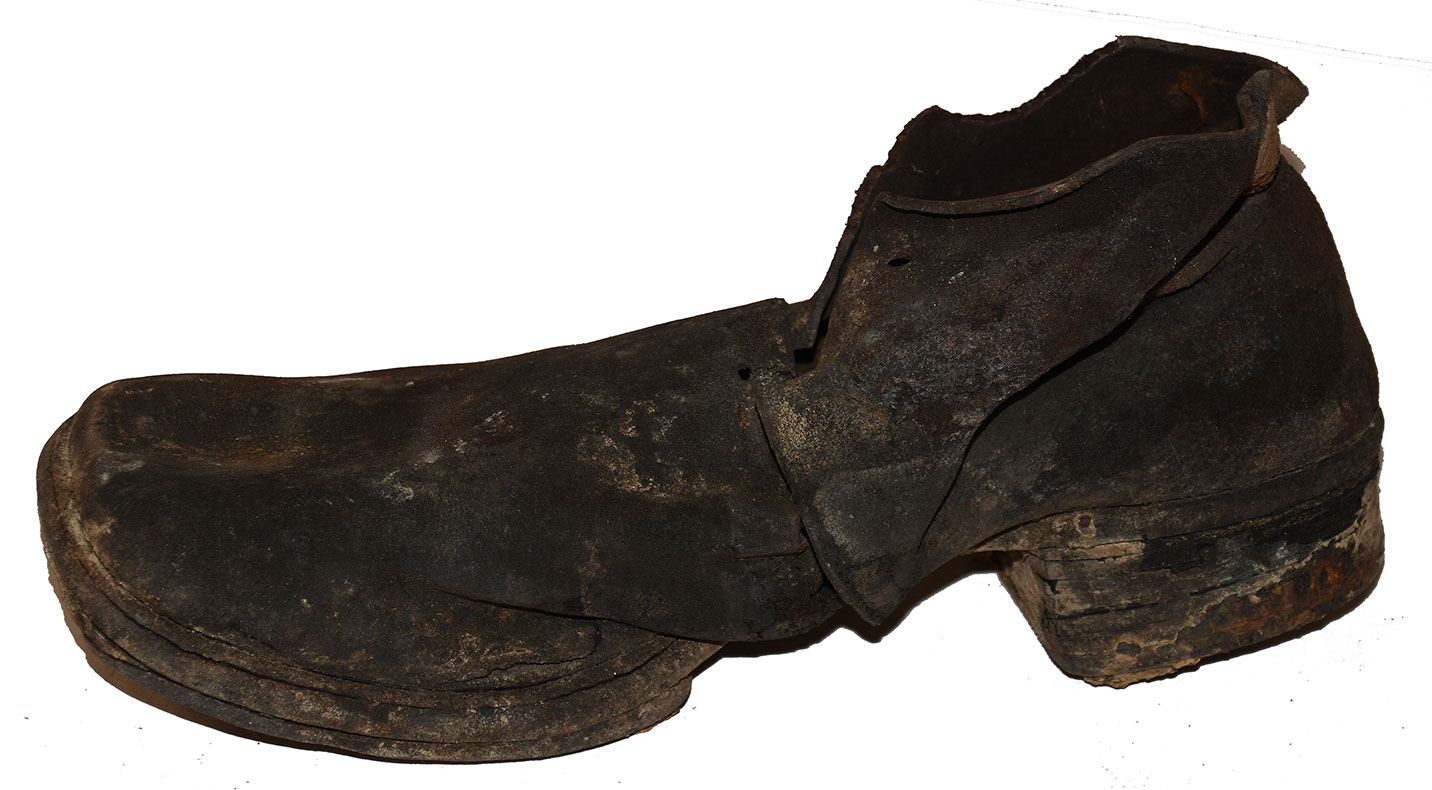
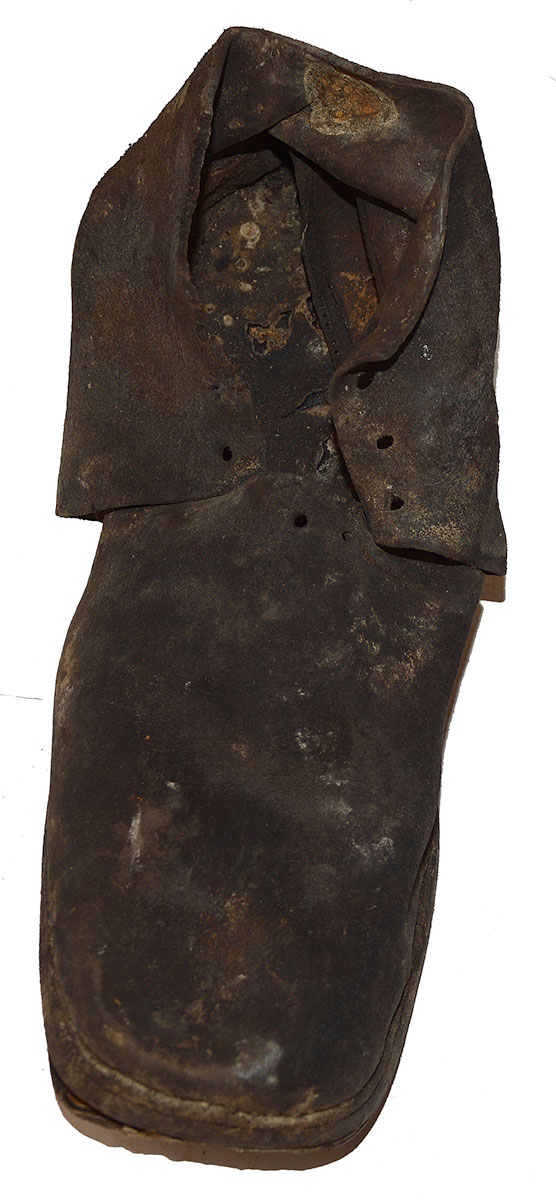
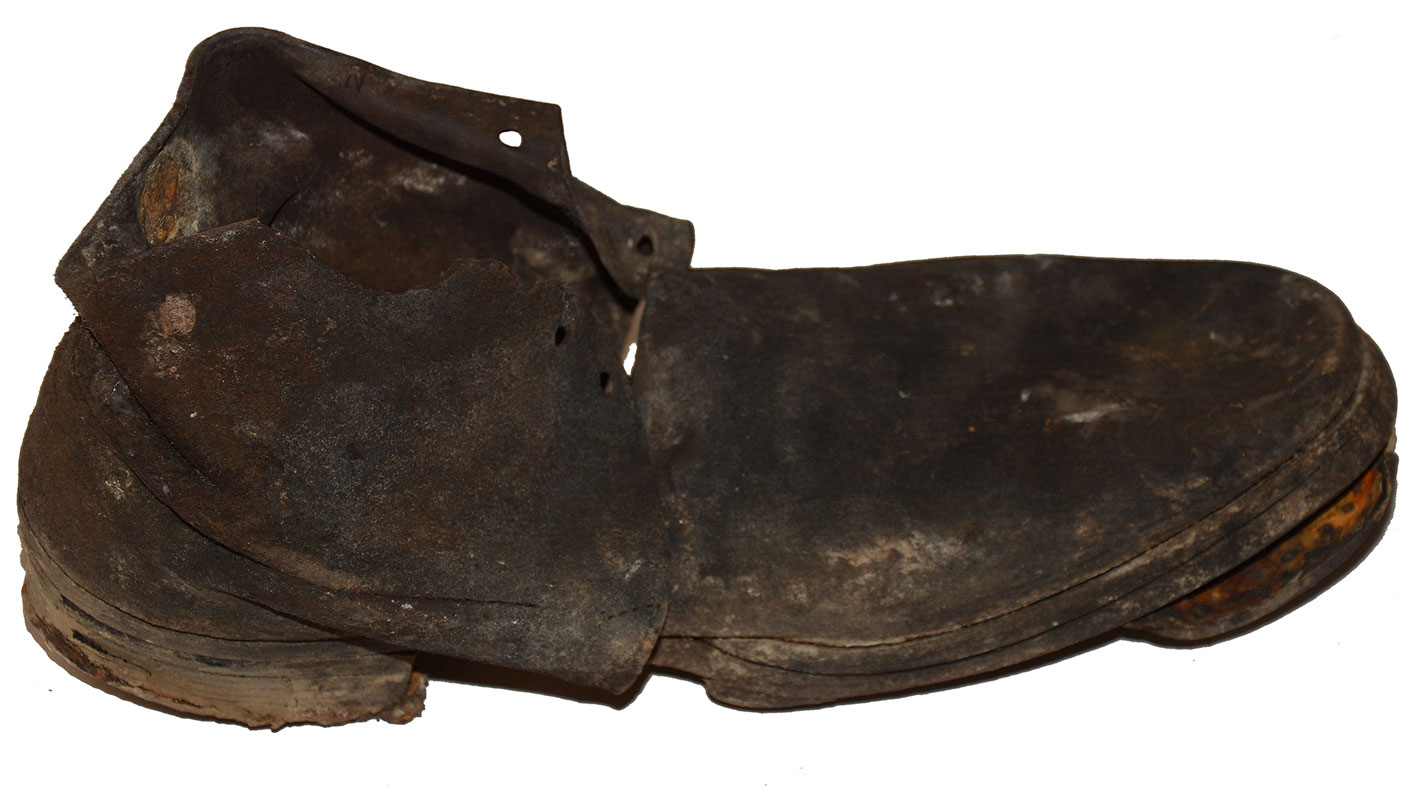
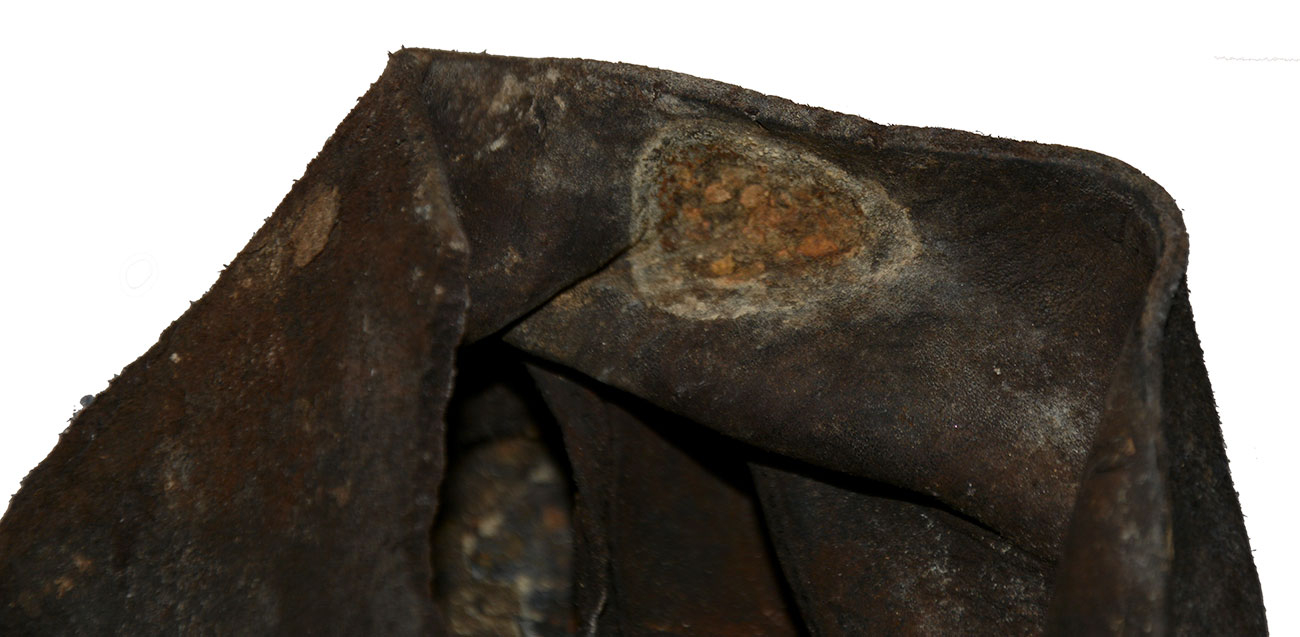
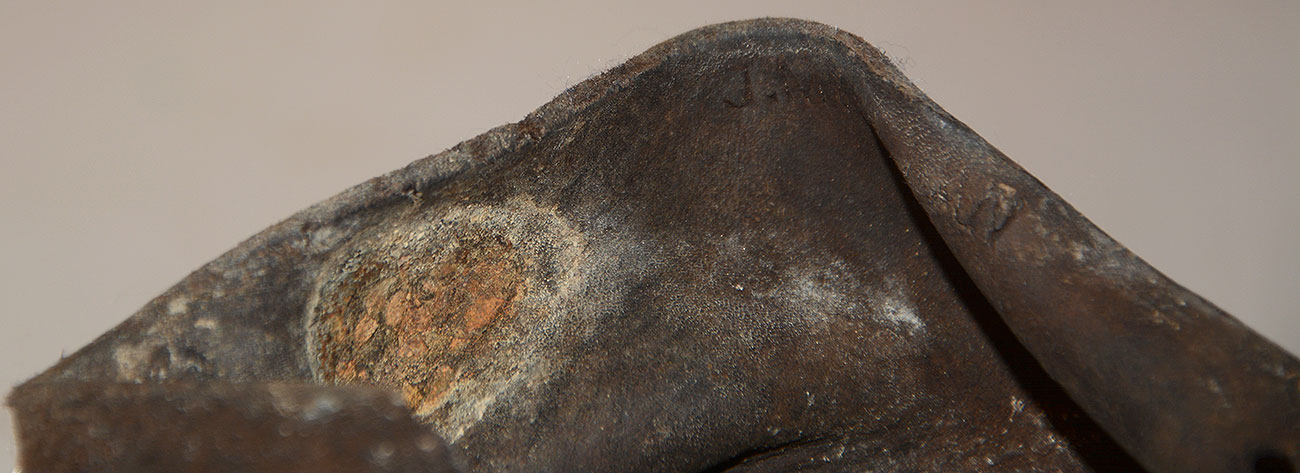
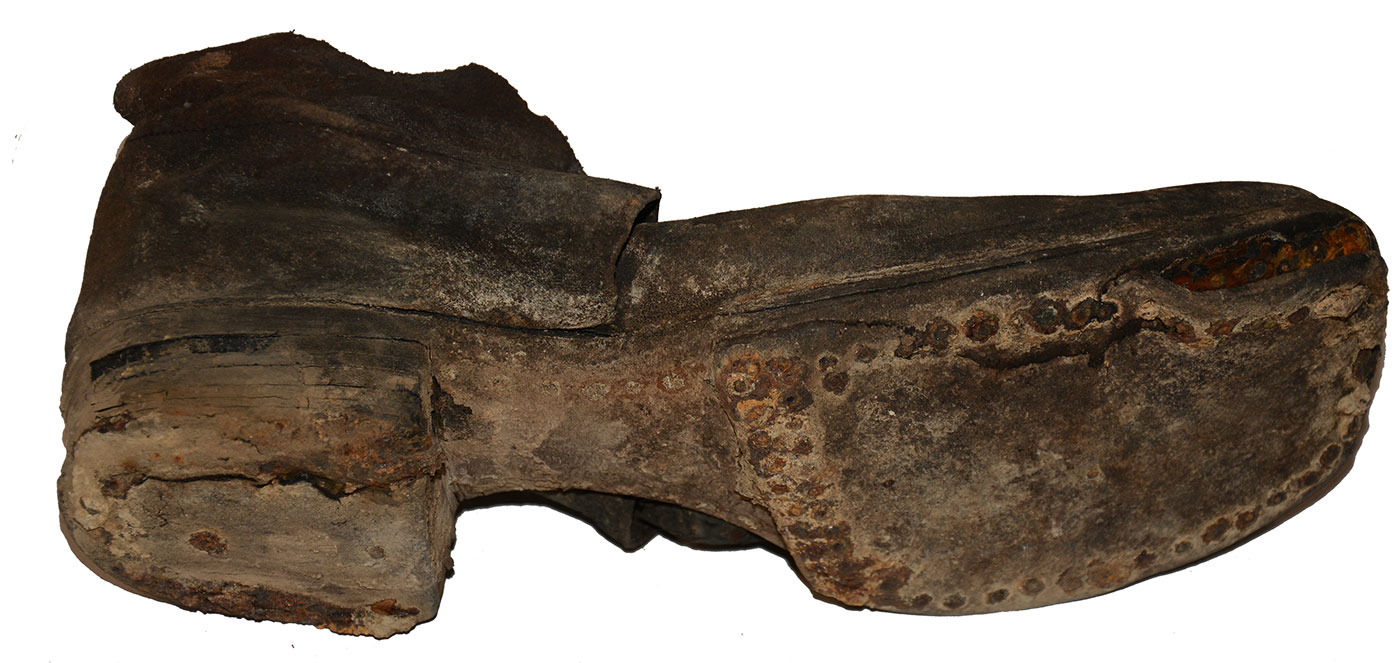
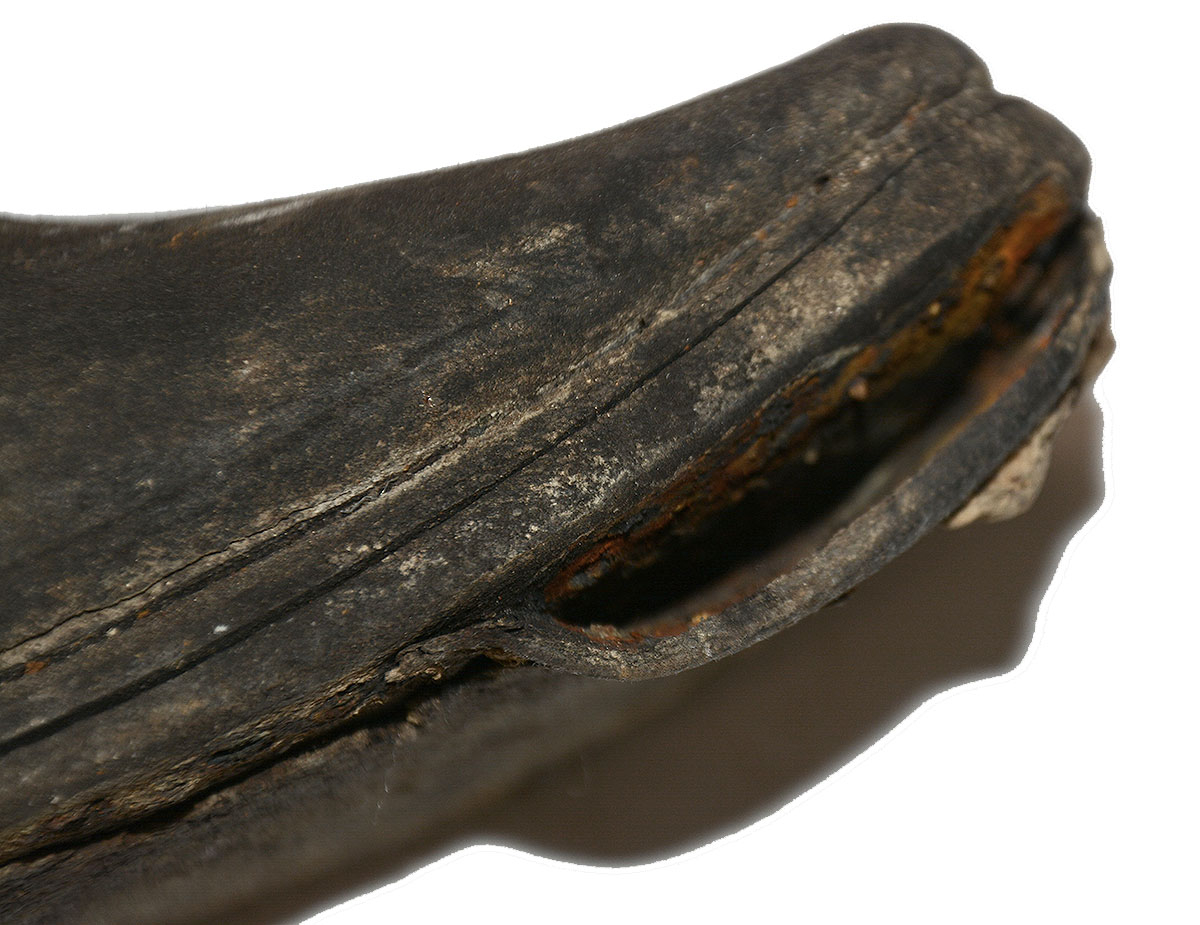
$1,250.00
Quantity Available: 1
Item Code: 1052-492
Shipping: Determined by Method & Location of buyer
To Order:
Call 717-334-0347,
Fax 717-334-5016, or E-mail
This army-issue was excavated at Fort Pembina, ND, established in 1870 and in operation to 1895. It was found on private property, with the owner’s permission, and is in good condition, a result of the wet, anaerobic conditions in which it was found. The site has yielded both cloth and leather in remarkable condition ranging from Civil War surplus material used by the army into the 1870s as well as later material. This is a good example of the army Model 1872 shoe, similar to the Civil War patterns, but employing brass-screwed soles. The left side of the ankle shows a partial maker’s mark reading “J. M . . .” with an “N” further along in the line. There is a very good chance this is John Mundell and Company of Philadelphia. Mundell was an early provider the new pattern to the army, who found the old pattern shoes with sewn or pegged soles did not hold up on the rocky ground of the American southwest.
Mundell was born in Ireland and settled in Philadelphia in 1847, going into the shoe trade, with his first experience, “in the government shoe factory in the Schuylkill Arsenal.” In the mid-1850s he partnered in making a “special shoe for the southern trade,” which was likely a polite way of saying he sold cheap shoes to plantation owners for their enslaved workers, and later used this experience in making army shoes on contract in the Civil War, shoes that were sometimes referred to as, “negro brogans.” A short biography can be found in Vol. 3, 281-286, of Prominent and Progressive Pennsylvanians of the Nineteenth Century (Williamson et al. 1898,) which states that in 1872 he was requested to make shoes and boots for the Army on the new pattern, using brass screws to secure the soles instead of sewing- a necessity made clear by campaigns on the rocky ground of the American southwest.
“He soon secured work at the Government shoe factory in the Schuylkill Arsenal, and, within a year after he had arrived in Philadelphia in want , he entered upon business as a shoemaker on his own account . He was successful in his modest venture, and in 1855 began the manufacturing, with the Joseph H. Thompson Company, of a special shoe for the Southern trade, and when the Civil War came the firm had ten thousand dollars' worth of these goods on hand. With what money he could raise on this stock he bid for and secured contracts for army shoes, his first order being for four thousand pairs, followed soon after by another for twenty thousand pairs. In 1863 the introduction of a new machine in the business and a strike of Philadelphia shoemakers were the causes of many contracts going to New England manufacturers; but Mr. Mundell continued making his high-grade shoes and filled his contracts with regularity , and at the close of the conflict he was highly complimented by the Inspector-General with having furnished the best shoes that were supplied to the army.
In 1870 was formed the present firm of John Mundell & Company. In 1872 the firm, at the request of the Government, made what was termed the “Standard” boot and shoe, the soles being fastened by brass screws instead of being sewed. These were sent to troops on the Western outposts that they might be tested by the roughest service, and the reports all spoke so favorably of them that they were adopted as the regulation shoe . . . “
This shows the typical rough-side out construction of Civil War shoes, along with the vamp and quarters sewn together at the instep, with the quarters having in interior counter, heel reinforcement, four holes for laces on each side and two on the vamp for the lace to pass through. The sole is complete, but with hole worn through the outer layer on the right and partially detached at the toe, with the stacked leather of the heel seeming to be all there, but worn on the bottom. The stitching is gone between the vamp and quarters, but the leather is stiff and everything holds together. The upper right edge of the ankle is torn toward the front, taking away the top lace hole and the upper half of the second. Still, this displays well and is a scarce piece.
Fort Pembina was a U.S. Army Indian War post situated in the Red River Valley in North Dakota near the Canadian border, established in 1870 and in operation until 1895. Trading posts existed earlier in the area as part of the fur trade, and the first U.S. military post there was temporary- manned by a detachment of Minnesota troops in 1863-1864 following the 1862 Sioux uprising. In March 1870 a new fort was established south of the Pembina River and about 200 yards west of the Red River, completed by July and named in honor of Gen. George H. Thomas. The name was changed to Fort Pembina in September and the initial garrison consisted of two companies of the 20th US Infantry and excavations show that, as is typical of the early Indian Wars regular army, their uniforms and gear were a mix of Civil War surplus issue, private purchase material, and later army issue patterns and private purchases as time went on. Their main duty was to provide security for settlers worried about Sioux returning south from Canada, but the troops were more occupied with escorting boundary surveys along the Canadian border and preventing Fenian raids heading north into Canada.
The fort included enlistedmen’s barracks, officers’ quarters, guard house, ordnance storehouse, company kitchen, root house, laundress’s quarters, quarters for civilian employees, hospital and hospital servant’s house, a barn for the “hospital cow,” quartermaster and commissary offices and storehouse, stables, wagon shed, etc. The garrison reached peak strength in 1878 af 200, but the average was about 125 enlisted men and 8 officers. An October 1885 return listed 97 men, 2 field pieces, 1 mountain howitzer, 100 rifles, 19 pistols, 23 mules, and 9 wagons. By 1890 the post had just 23 men, and after an 1895 fire destroyed some 19 buildings it was decided to abandon the fort rather than rebuild, the last detachment left in September. The property was turned over to the Interior Department and later sold in 1902.
Indian War period army shoes are far rarer than their Civil War predecessors, which are scarce to begin with, though produced in the millions. Neither are the sort of thing to be preserved by veteran or treasured by his family. This is a good regulation example, maker marked, very likely by manufacturer who first supplied them for field trial by the army. [sr] [ph:L]
~~~~~~~~~~~~~~~~~~~~~~~~~~~~~~~~~~~
THIS ITEM, AS WITH ALL OTHER ITEMS AVAILABLE ON OUR WEB SITE,
MAY BE PURCHASED THROUGH OUR LAYAWAY PROGRAM.
CLICK HERE FOR OUR POLICIES AND TERMS.
THANK YOU!
Inquire About US ISSUE MODEL 1872 SHOE, MAKER MARKED, POSSIBLY BY JOHN MUNDELL OF PHILADELPHIA
Most Popular
Historical Firearms Stolen From The National Civil War Museum In Harrisburg, Pa »
Theft From Gravesite Of Gen. John Reynolds »
Selection Of Unframed Prints By Don Troiani »
Fine Condition Brass Infantry Bugle Insignia »
Large English Bowie Knife With Sheath 1870’S – 1880’S »
Imported (Clauberg) Us Model 1860 Light Cavalry Officer's Saber »
featured item
VERY SCARCE 1799-1800 SWAN CONTRACT VIRGINIA MILITIA REGIMENTALLY MARKED MUSKET: 42nd REGIMENT, PITTSYLVANIA
This musket is stamped “42. VA. REGT. PITTSYLVANIA” on the barrel, was later altered to percussion and then shortened for use in the civilian market. It is a scarce survivor from muskets delivered to Virginia by Jame Swan of Boston in January… (1000-241). Learn More »


